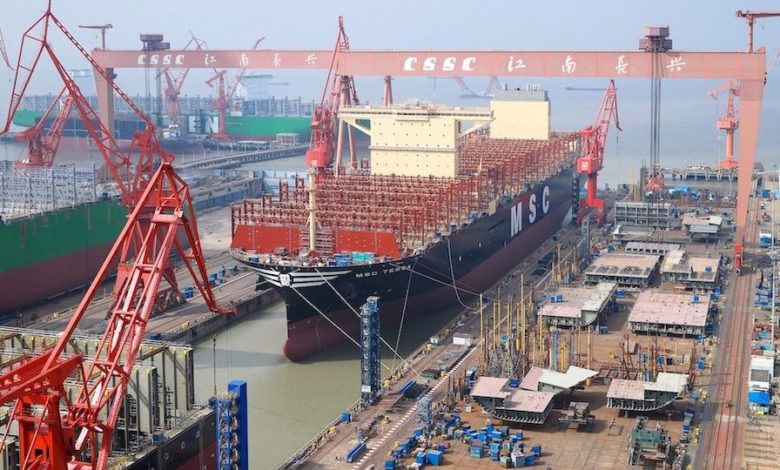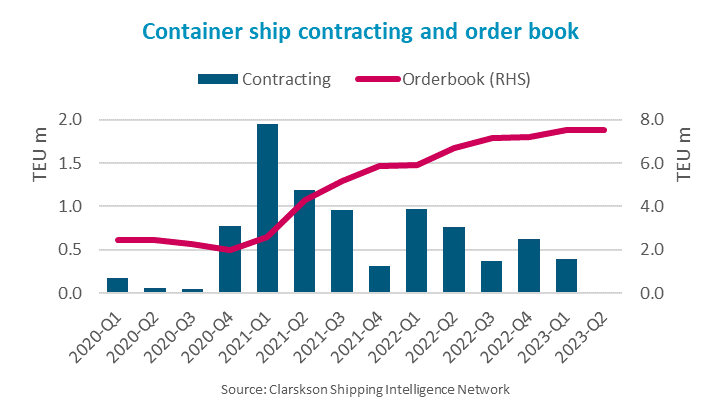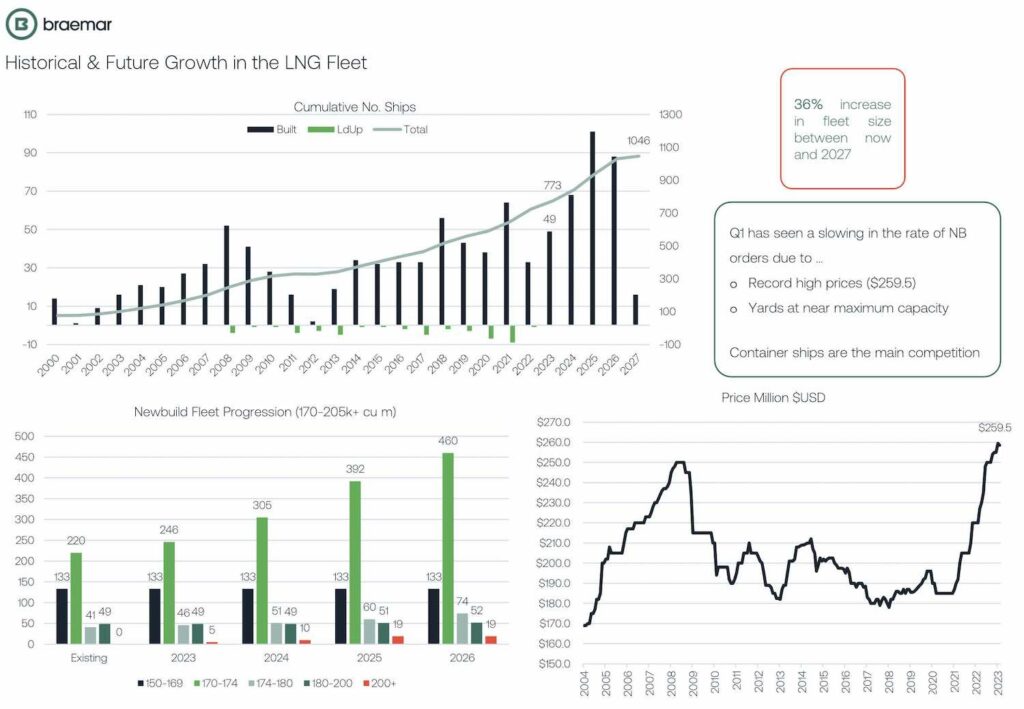Boxship and gas carrier orders smash more records

LNG carrier and containership ordering continue to create incredible records. The two ship types have dominated yard contracts for the last two years, sending pricing to all-time highs, and promising to overhaul their fleets in the coming years.
During the last 10 quarters, 8.61m teu worth of containerships have been contracted, matching the level contracted during the preceding 30 quarters, according to new data from shipping organisation BIMCO.

The orderbook has now increased for 10 straight quarters, reaching a new record high in each of the last four quarters, and at 7.54m teu it now equals 28.9% of the existing fleet, with BIMCO, having taken scrapping into account, predicting the global box fleet will shortly exceed 30m teu for the first time, up 16% compared to today.
The extreme ordering by containership and gas carrier owners has elbowed out tanker and dry bulk firms from renewing their fleets, but this could be about to change.
Brokers Braemar have noted how LNG newbuild prices have hit record highs at $259.5m for a standard ship, a figure that is now turning some owners away from ordering more.
Braemar’s latest LNG market report noted signs of less orders in recent weeks due to a lull in project final investment decisions and today’s high prices are also reducing speculative ordering.
Braemar is forecasting the global LNG fleet will expand by a massive 36% between now and 2027.


These figures are striking.
The reasons for the LNG orders are plain for all to see – a genuine replacement of pipelines with sea miles, which is likely to be permanent, as ships allow a choice of suppliers, and the world is feeling much less certain now.
The containership orders would make much more sense if they were for ships which reflect the imminent obligation to use more planet-friendly fuels, but in fact they usually don’t – they are mostly orders for “dual fuel” ships which are not in fact fitted out to burn methane or methanol or ammonia but which are built with the tank footings for the other fuel in place.
As such they reflect a level of optimism about the world economy which is quite surprising.